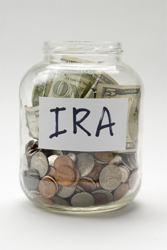4 Good Ways You Could Use An RMD
Published Saturday, August 1, 2015 at: 7:00 AM EDT
You already may know the rules for required minimum distributions (RMDs) from traditional IRAs and retirement plans sponsored by an employer. Once you reach age 70½, you have to start taking money out of these plans on an annual basis, mandatory withdrawals that will continue for the rest of your life—whether you want the money or not. These distributions generally are taxed at ordinary income tax rates.
The required amount is calculated each year, based on your life expectancy according to IRS tables and your account balances at the end of the previous year. And this isn’t an obligation to take lightly. The penalty for failing to take an RMD is 50% of the amount that you should have withdrawn.
 So what should you do with the money? Assuming you don’t have a pressing need for the cash, one of these four options might make sense:
So what should you do with the money? Assuming you don’t have a pressing need for the cash, one of these four options might make sense:
1. Purchase life insurance. Although there are strict restrictions on using money inside an IRA or other kind of retirement account to buy life insurance, there’s nothing preventing you from using RMD cash to acquire a life policy. Of course, life insurance premiums become pricey later in life, but this still may be a reasonable approach if a primary goal is to preserve assets for your children or grandchildren. Or you and your spouse could buy a second-to-die life policy, usually at a lower cost, that will pay off when both of you are gone.
2. Convert excess to a Roth IRA. Because you're required to take RMDs anyway—and to pay tax on the withdrawals—you might take more than the minimum required amount out of your IRA. Although you can't convert an RMD to a Roth, you can move over the excess to a Roth IRA for the future benefits. After five years, any distributions of those amounts will be completely exempt from tax, and if you don't need the money, you can leave it in the account for your heirs.
3. Donate to a charity. An RMD also can give you an opportunity to satisfy your charitable intentions. If you donate the money to a qualified charitable organization, you'll be able to deduct that amount on your tax return, canceling out the tax you’d otherwise pay on the distributions. Or you might use RMDs to fund a charitable remainder trust that provides current income to you or another beneficiary. Then, at the end of the trust term, the remaining assets go to a charity.
4. Gifts to family members. The simplest strategy is to give the funds from your RMDs to children or grandchildren who are ultimately in line to receive the assets. Under the annual gift tax exclusion, you can give each recipient up to $14,000 a year without paying gift tax. There’s no limit on the number of recipients.
These are just four possible ways you can use an RMD to your advantage. Investigate all the options and make an informed decision.
This article was written by a professional financial journalist for Preferred NY Financial Group,LLC and is not intended as legal or investment advice.
An individual retirement account (IRA) allows individuals to direct pretax incom, up to specific annual limits, toward retirements that can grow tax-deferred (no capital gains or dividend income is taxed). Individual taxpayers are allowed to contribute 100% of compensation up to a specified maximum dollar amount to their Tranditional IRA. Contributions to the Tranditional IRA may be tax-deductible depending on the taxpayer's income, tax-filling status and other factors. Taxed must be paid upon withdrawal of any deducted contributions plus earnings and on the earnings from your non-deducted contributions. Prior to age 59%, distributions may be taken for certain reasons without incurring a 10 percent penalty on earnings. None of the information in this document should be considered tax or legal advice. Please consult with your legal or tax advisor for more information concerning your individual situation.
Contributions to a Roth IRA are not tax deductible and these is no mandatory distribution age. All earnings and principal are tax free if rules and regulations are followed. Eligibility for a Roth account depends on income. Principal contributions can be withdrawn any time without penalty (subject to some minimal conditions).
© 2024 Advisor Products Inc. All Rights Reserved.
